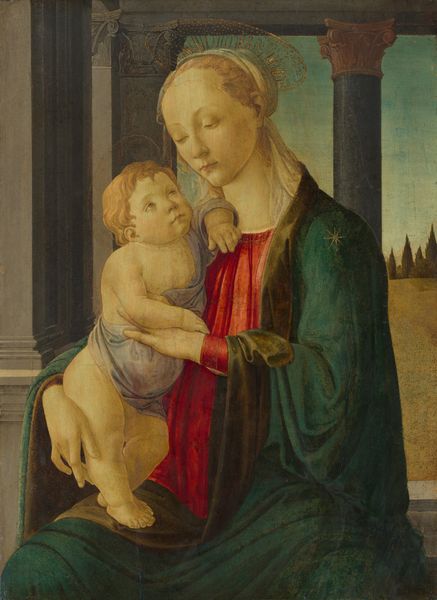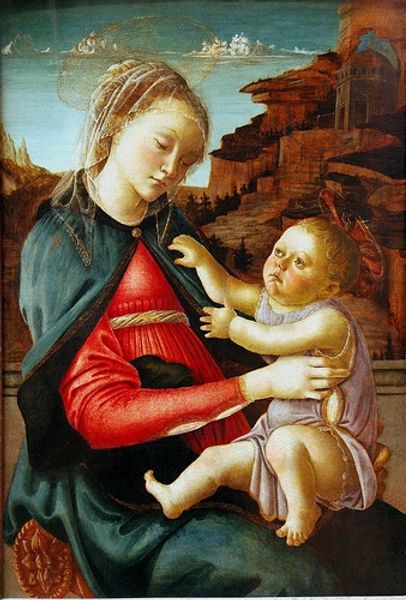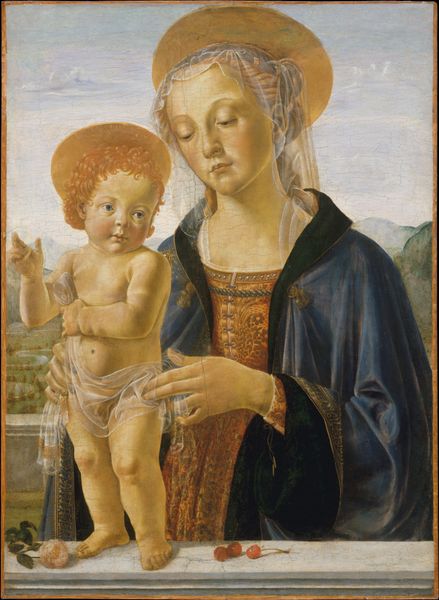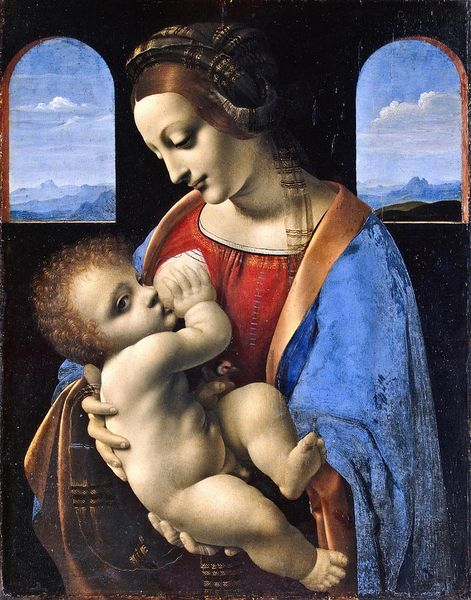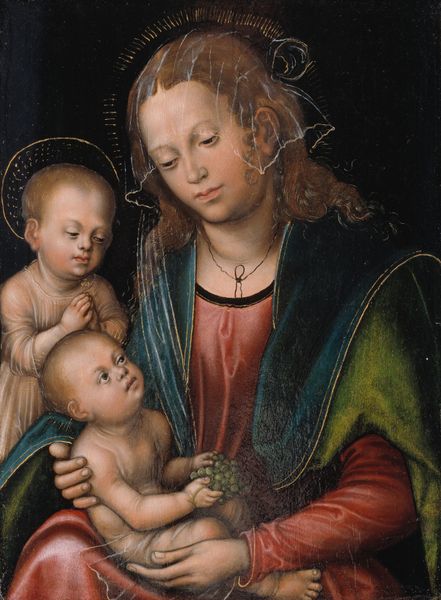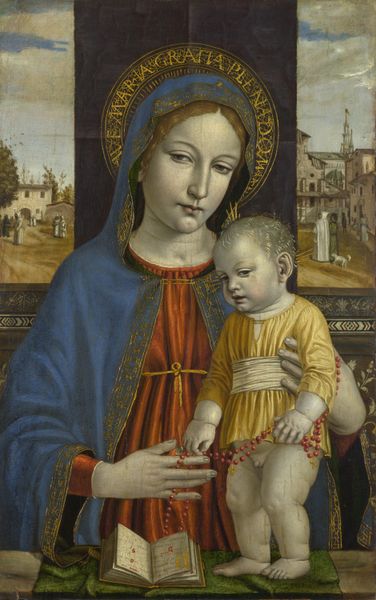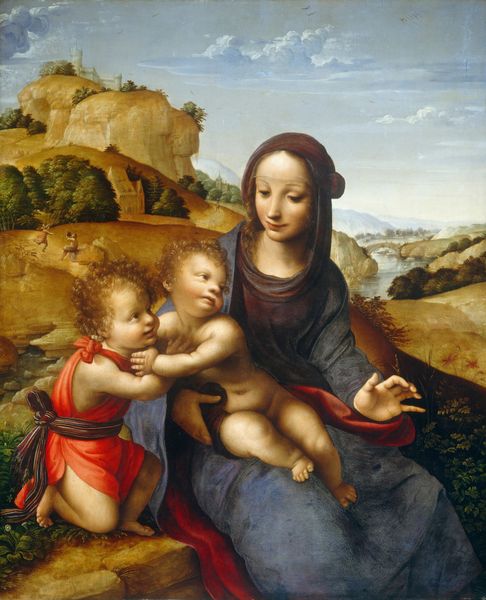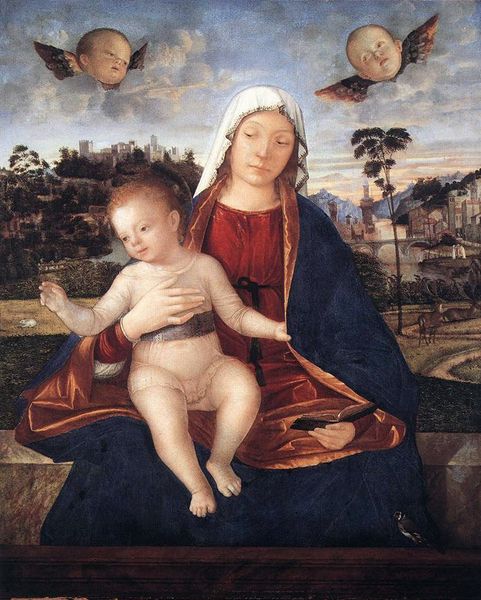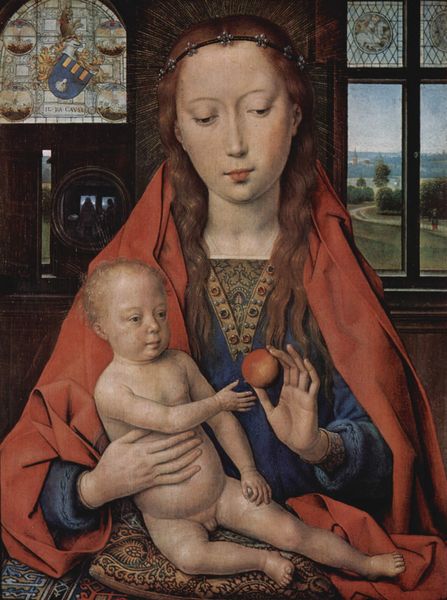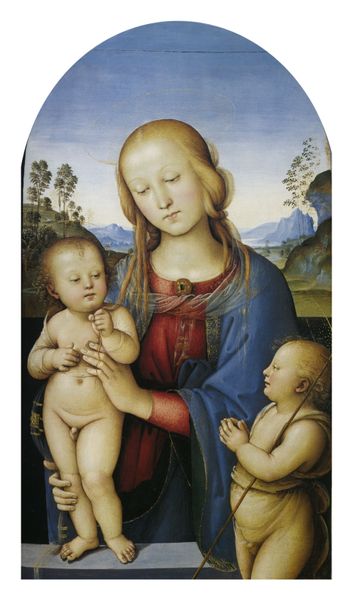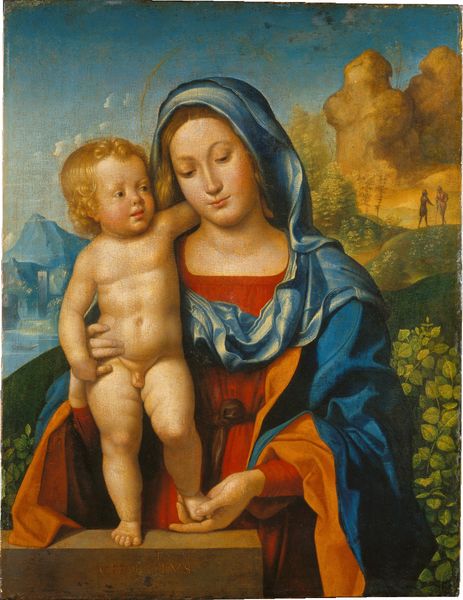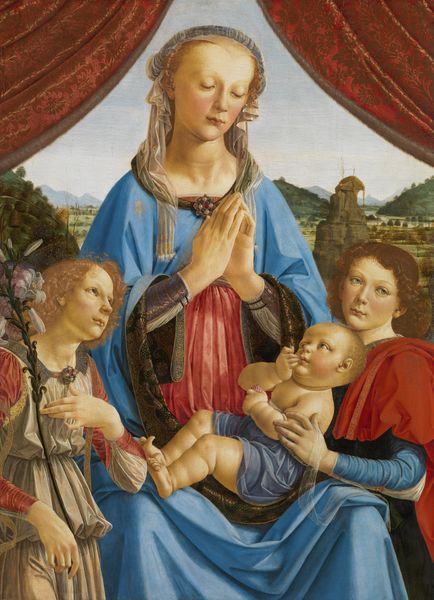
tempera, oil-paint
#
portrait
#
tempera
#
oil-paint
#
oil painting
#
italian-renaissance
Copyright: Public domain
Curator: Look here, we have Andrea del Verrocchio's "Madonna and Child," executed around 1488. It's tempera and oil on panel. Editor: The initial feel is serene but also slightly…stilted? It's a beautiful painting, of course, but something about the pose and the almost sculptural treatment of the figures gives it a certain formality. What do you see? Curator: Well, the Madonna and Child theme resonates deeply. The tenderness is obvious, the Madonna looking down at Jesus with affection. But look closer; these aren't just individual figures; they are representing core tenets of the Christian faith—divine motherhood, the innocent son of God. These symbols were crucial in shaping people’s beliefs and actions. Editor: Agreed, but I am interested in the materials, the tempera mixed with oils; you can feel the layered process, a slow accretion of color and form. The fabric drapes are fascinating, with subtle hints of luxury despite the painting's relatively modest scale. How available was ultramarine at that time, I wonder? Curator: Ultramarine held powerful symbolism, derived from lapis lazuli and imported at great cost; the use suggests a devotion. Colors are critical codes. The garments subtly dictate Mary's dignity and role; look at how she frames the boy. Editor: Yet I notice how earthy those robes become towards the lower edges – there are so many hints of red clay worked into those tones – you get the impression that despite its reverential status as a religious item it must also fulfill very material concerns - preservation, visibility, cost of materials. Curator: That tension between the sacred and the earthly is inherent, certainly. To paint the divine, one uses earthly matter and skilled handcraft. It makes the image accessible and relatable for viewers who struggle for meaning. The use of oil and tempera to add both clarity and emotion is how those Renaissance values were translated for the ordinary. Editor: It reminds me how art operates at both levels. We can appreciate "Madonna and Child" for what it represents, and what went into creating it. What it suggests about the availability of craftsmanship or the culture and economy that drove it makes all the difference for a deeper understanding of the past. Curator: And indeed, the future: what these sacred archetypes signify will shape what the image will trigger and represent in another few hundred years! We are all participating.
Comments
No comments
Be the first to comment and join the conversation on the ultimate creative platform.

